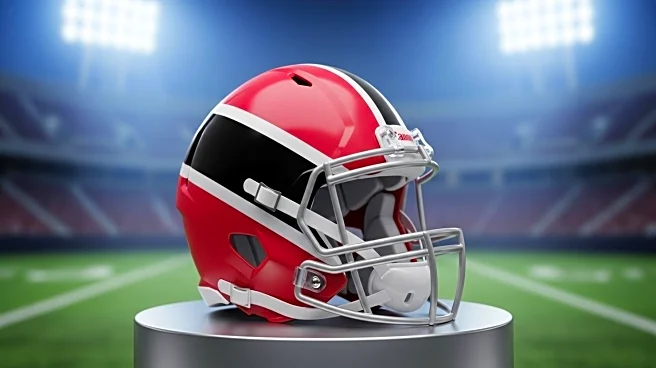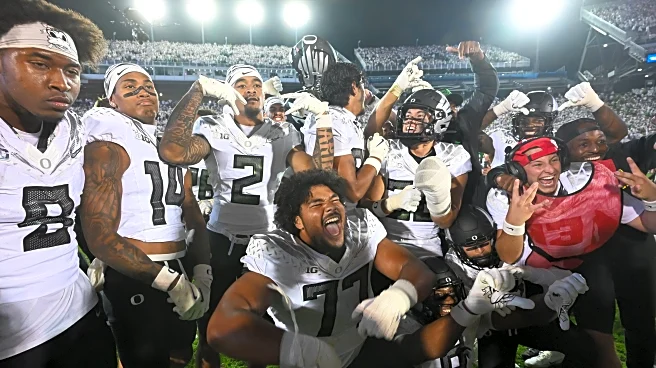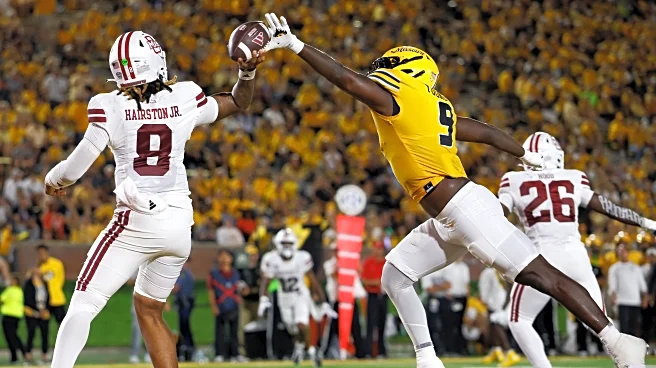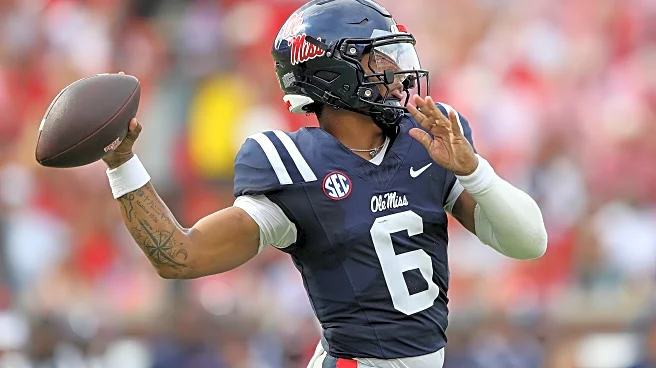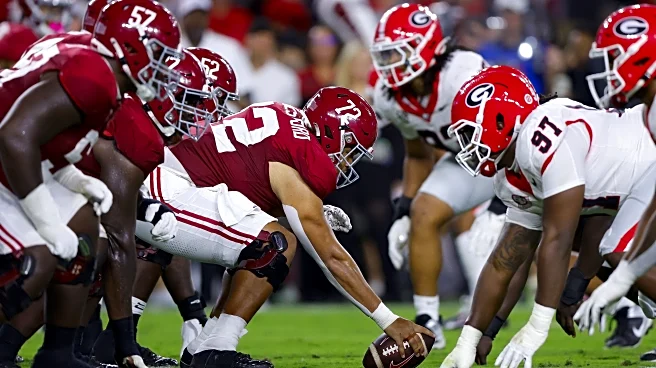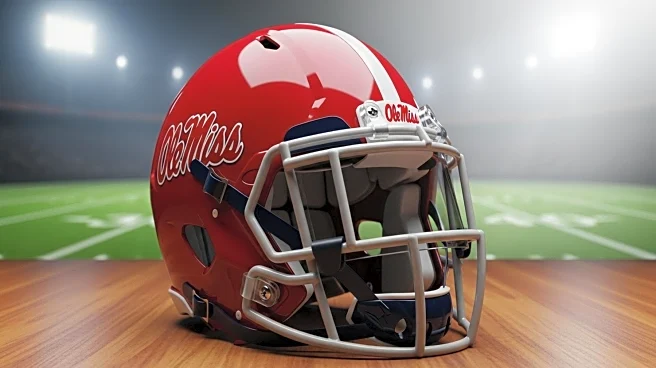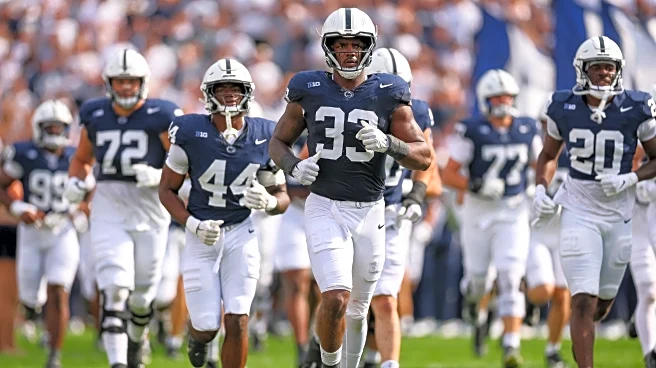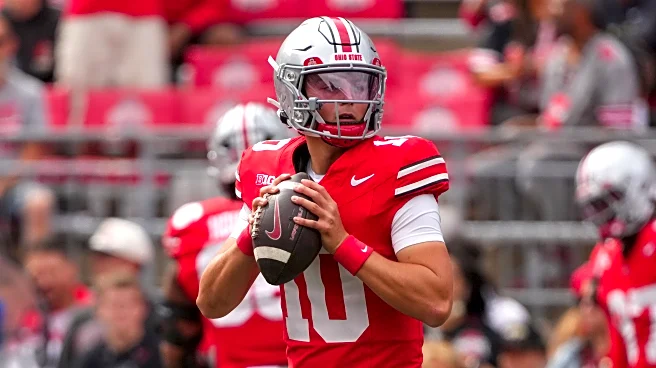What's Happening?
Trinidad and Tobago flags have become a notable presence at Ole Miss football games, driven by the popularity of quarterback Trinidad Chambliss. Chambliss, originally from Grand Rapids, Michigan, has no direct ties to the Caribbean nation, but his unique first name has inspired fans to display the Trinidadian flag in support. Chambliss gained attention for his performances at Ferris State, where he led the team to national titles in 2022 and 2024. His success caught the eye of Ole Miss coach Lane Kiffin, who recruited him to the Rebels. Despite starting the season as a backup, Chambliss stepped up following an injury to the starting quarterback, Austin Simmons, and has since become a campus favorite.
Why It's Important?
The display of Trinidad and Tobago flags at Ole Miss games highlights the cultural impact and fan engagement surrounding college sports. Chambliss' rise from a Division II player to a key figure at Ole Miss underscores the opportunities available in college athletics for under-recruited players. This phenomenon also reflects the creative ways fans express support and build community around sports teams. The flags serve as a symbol of Chambliss' growing influence and the unique identity he brings to the team, fostering a sense of unity and excitement among supporters.
What's Next?
As Chambliss continues to perform well, his role in the team is likely to expand, potentially leading to more significant contributions in upcoming games. The Rebels' remaining schedule includes matchups against teams like Georgia and Mississippi State, where Chambliss' performance could be crucial. The continued presence of Trinidad and Tobago flags may further enhance the atmosphere at games, encouraging more fans to participate in this unique form of support. Additionally, Chambliss' success could inspire other players with unconventional backgrounds to pursue opportunities in higher divisions.
Beyond the Headlines
The embrace of Trinidad and Tobago flags at Ole Miss games raises interesting questions about cultural representation and identity in sports. While Chambliss does not have direct ties to the Caribbean nation, the flags symbolize the broader inclusivity and diversity within college sports. This trend may prompt discussions about the role of cultural symbols in sports fandom and how they can be used to celebrate individual players' identities. It also highlights the potential for sports to bridge cultural gaps and create shared experiences among diverse groups of fans.

